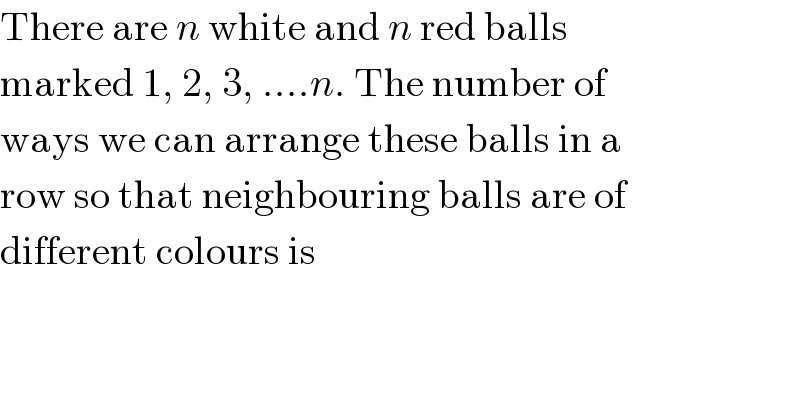
Question and Answers Forum
Previous in Permutation and Combination Next in Permutation and Combination
Question Number 21799 by Tinkutara last updated on 04/Oct/17

Commented by mrW1 last updated on 06/Oct/17

Commented by Tinkutara last updated on 06/Oct/17

